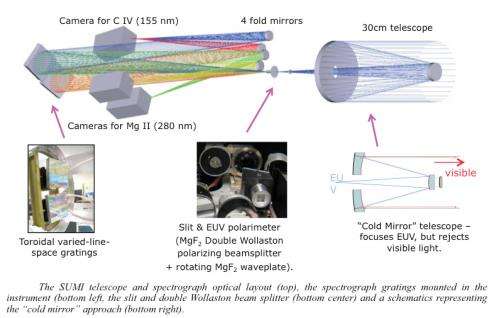SUMI rocket to study the Sun's magnetic fields

(Phys.org) -- On July 5, NASA will launch a sounding rocket mission called the Solar Ultraviolet Magnetograph Investigation or SUMI, to study the intricate, constantly changing magnetic fields on the sun in a hard-to-observe area of the sun's low atmosphere called the chromosphere.
The primary objective of the SUMI experiment is to test the technologies that have been developed for making magnetic field measurements in the upper chromosphere/ lower transition region. Transition region magnetic field measurements are very important, but the most important Zeeman sensitive lines are in the ultraviolet which are impossible to observe from the Earth. SUMI plans to make exploratory polarization measurements in this region to develop the scientific tools to analyze and convert our polarization data into vector magnetic field measurements and to use this data in determining the sensitivity requirements for space-based missions.
The inaugural flight of the SUMI instrument occurred on July 30, 2010.
Launch date for this mission is July 5, 2012 from White Sands Missile Range, New Mexico.
Provided by NASA




















